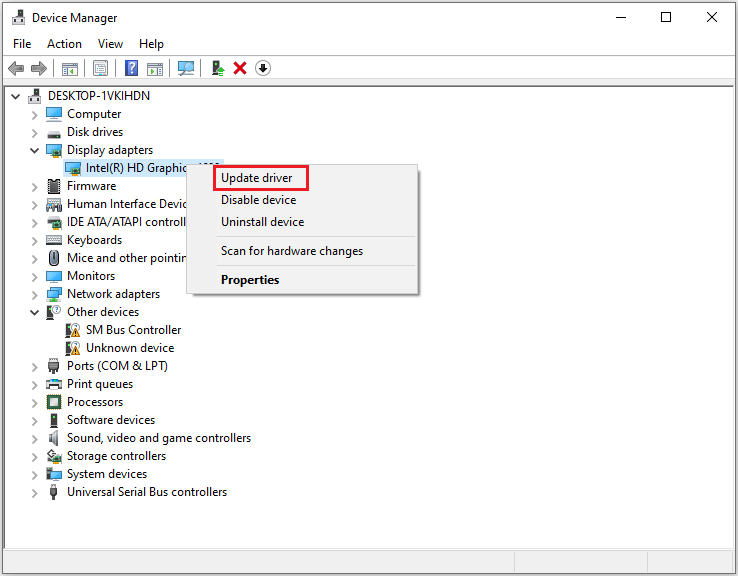Sometimes, you may encounter that a process called GfxUI.exe takes too much CPU usage. Do you know what it is? How to decrease the CPU usage of it? We present 4 comprehensive solutions in this post from MiniTool. You can keep reading it and solve the problem.
What Is GfxUI.exe?
GfxUI.exe is a process associated with Intel GPU. The legitimate file of GfxUi.exe is located in the C:\Windows\System32 folder. When dealing with some problems in Task Manager, you may find that GfxUI.exe consumes a high percentage of CPU (up to 50% or even 100%). It makes your computer sluggish and freezes often. It happens due to faults with Intel graphics drivers or virus/malware infections.
How to Deal with GfxUI.exe High CPU Usage?
In this section, we will introduce what you should do when GfxUI.exe occupies much CPU usage. Before proceeding with these fixes, please back up your important data because this problem can be triggered by virus infections, resulting in data loss.
Here, we recommend a professional PC backup software called MiniTool ShadowMaker. It is a free tool with powerful features, such as backing up the system, files, disks & partitions. In addition, you can sync files with it. Now click the button below and have a try!
MiniTool ShadowMaker TrialClick to Download100%Clean & Safe
Restart Your Computer
Restarting the computer can repair most of the system glitches. When you don’t know what the specific reason for the GfxUI.exe high disk usage issue is, try to restart the PC and see if it solves your problem.
Perform a Virus Scan
If you don’t have Intel GPU on your computer, you will not run into the GfxUI.exe high CPU usage issue. Then, it could be a malware or virus that can masquerade as GfxUI.exe. Therefore, you should perform a virus scan immediately to fix this issue. To do so, follow the steps below:
Step 1: Press Win + I to open Settings.
Step 2: Navigate to Update & Security > Windows Security > Virus & threats protection.
Step 3: Click on Scan options > select Microsoft Defender Offline scan > Scan now.

This process will restart your computer and will take about 15 minutes. Then just wait for it to complete and check whether your problem is solved.
Update or Roll Back the Graphics Driver
Sometimes, a clash between two graphics cards or an issue with the Intel graphics drivers may lead to the GfxUI.exe high memory problem. Fortunately, it can be fixed by updating the graphics driver. Here are the detailed guides:
#Update Graphics Driver
Step 1: Press Win + X and select Device Manager from the menu.
Step 2: Double-click the Display adapters menu to expand it.
Step 3: Then right-click your graphics card to choose Update driver.

Step 4: Click Search automatically for drivers and follow the on-screen instructions to finish the update process.
If there is no update available, you need to roll back your graphics driver to fix the GfxUI.exe high disk usage issue.
#Roll Back Graphics Driver
Step 1: Open Device Manager, expand Display adapters, and then right-click your graphics card to choose Properties.
Step 2: Go to the Driver tab, and click on Roll Back Driver.

Reinstall the Graphics Driver
If updating the driver cannot fix the GfxUI.exe high CPU usage issue, it is necessary to reinstall the graphics driver. To do so, follow the instructions:
Step 1: Navigate to Device Manager and right-click on your graphics card to select Uninstall device.
Step 2: Check the Delete the driver software for this device option and click Uninstall.

Step 3: Wait for the uninstallation of the adapter and its driver to complete, and then restart your computer.
Step 4: Go to the official Intel website to download and install the latest version of your Intel graphics driver. Please make sure it is compatible with your Windows operating system.
After the installation process is finished, restart your computer and go to Task Manager to check if the GfxUI.exe 100% CPU usage problem is addressed.
Final Words
The GfxUI.exe high CPU usage issue can be a headache. But luckily, this post provides you with 4 effective fixes to it. After reading them, you should know what to do. Hope you can successfully solve this problem.

User Comments :